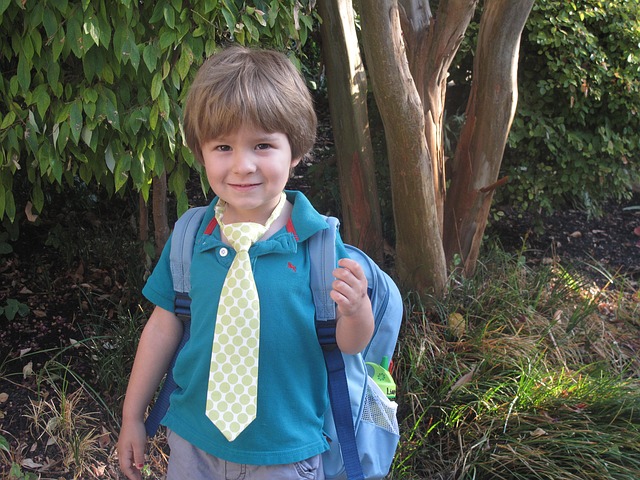A backpack is the most basic and essential tool that our children and teenagers use when they head back to school. When school is in session, children have a backpack on hand at least five days a week. Unsurprisingly, something that spends that much time with your child can have a huge impact on their health – particularly if we forget to check on these backpacks regularly as the school year goes on.
 By design, a backpack should be safe to use - healthychildren.org notes that backpacks “are designed to distribute the weight of the[ir] load among some of the body's strongest muscles.” This is why they’re the preferred tool for carrying school books, rather than messenger or tote bags. Unfortunately, despite their safe design, using a backpack incorrectly - or carrying a bag that is too heavy - can still increase the risk of a child suffering from muscle or joint problems.
By design, a backpack should be safe to use - healthychildren.org notes that backpacks “are designed to distribute the weight of the[ir] load among some of the body's strongest muscles.” This is why they’re the preferred tool for carrying school books, rather than messenger or tote bags. Unfortunately, despite their safe design, using a backpack incorrectly - or carrying a bag that is too heavy - can still increase the risk of a child suffering from muscle or joint problems.
How Can A Backpack Affect My Child’s Health?
Depending on the number of school books they carry on an average day, a backpack can literally weigh a child down, particularly if they do not carry or wear the backpack as is recommended. In fact, overloaded backpacks are a common reason for backpack-related health issues. Heavy backpacks can put extra stress on a child’s muscles and spine; this extra stress may cause severe back, neck and shoulder pain, and even lead to poor posture (and unfortunately, poor posture can also cause a surprising number of additional health issues).
To minimize this potential issue, experts recommend that a backpack never weigh more than 10% to 20% of a student's total body weight. Yet all too often, students carry more than this recommended load - and as many as 14,000 children are treated each year for injuries as a result. The problem has become so severe and pervasive that some lawmakers have even called for legislation that would require school districts to lighten the load that they’re putting on students’ backs.
The good news is that as digital textbooks become more and more commonplace, the risk of injury due to an overloaded backpack is slowly going down across the nation. Until this becomes the new national standard, however, parents and students should still take steps to minimize a child’s risk of being injured due to a heavy bag.
What Can I Do To Keep My Child Safe And Healthy?
The #1 thing a parent can do to help their child is to triple check that they have a durable, safe backpack that fits properly. Healthychildren.org currently recommends that parents look for the following when choosing their child’s backpack:
- “Wide, padded shoulder straps — Narrow straps can dig into shoulders. This can cause pain and restrict circulation.
- Two shoulder straps — Backpacks with one shoulder strap that runs across the body cannot distribute weight evenly.
- Padded back — A padded back protects against sharp edges on objects inside the pack and increases comfort.
- Waist strap — A waist strap can distribute the weight of a heavy load more evenly.
- Lightweight backpack — The backpack itself should not add much weight to the load.
- Rolling backpack — This type of backpack may be a good choice for students who must tote a heavy load. Remember that rolling backpacks still must be carried up stairs. They may be difficult to roll in snow.”
Once they’ve found the right backpack, parents should also encourage students to use it and wear it properly. For example, your child may like to wear their backpack over one shoulder; doing this, however, can put unnecessary strain on a single shoulder, and may result in muscle or back pack when the spine works to compensate for it. To avoid this, parents should make sure that children use both straps when carrying the backpack, and that both straps are tightened so that the backpack sits close to the wearer’s body.
Finally, parents are encouraged to remind students to only carry what is absolutely necessary. If they don’t need a book, why carry it? Leaving unnecessary dead weight like this off of their back will go a long way in helping them maintain good muscle and back health.
How Will I Know If There’s A Problem?
Good communication is the best way to determine whether or not your child’s backpack is causing any problems. If you haven’t already, it’s important to remind your child or teenager to speak up and let you know if they’re experiencing regular pain or discomfort in their backs or necks. Remember, pain in these areas should never be ignored. If it begins to develop, it’s best to call a doctor to schedule an exam; depending on what your doctor says, you may be asked to talk to your child’s teachers to develop an agreement that will allow you child to participate in their classes without putting additional strain on their backs - and their health.
Backpack safety is one of the most important and sadly forgotten aspects of Back To School health. If you feel that major changes in your child’s routines and their school’s standards could benefit your child’s health, we encourage you to work with local parents, school officials, and doctors alike to ensure that every student - not just yours - is able to attend school without putting themselves at risk.

